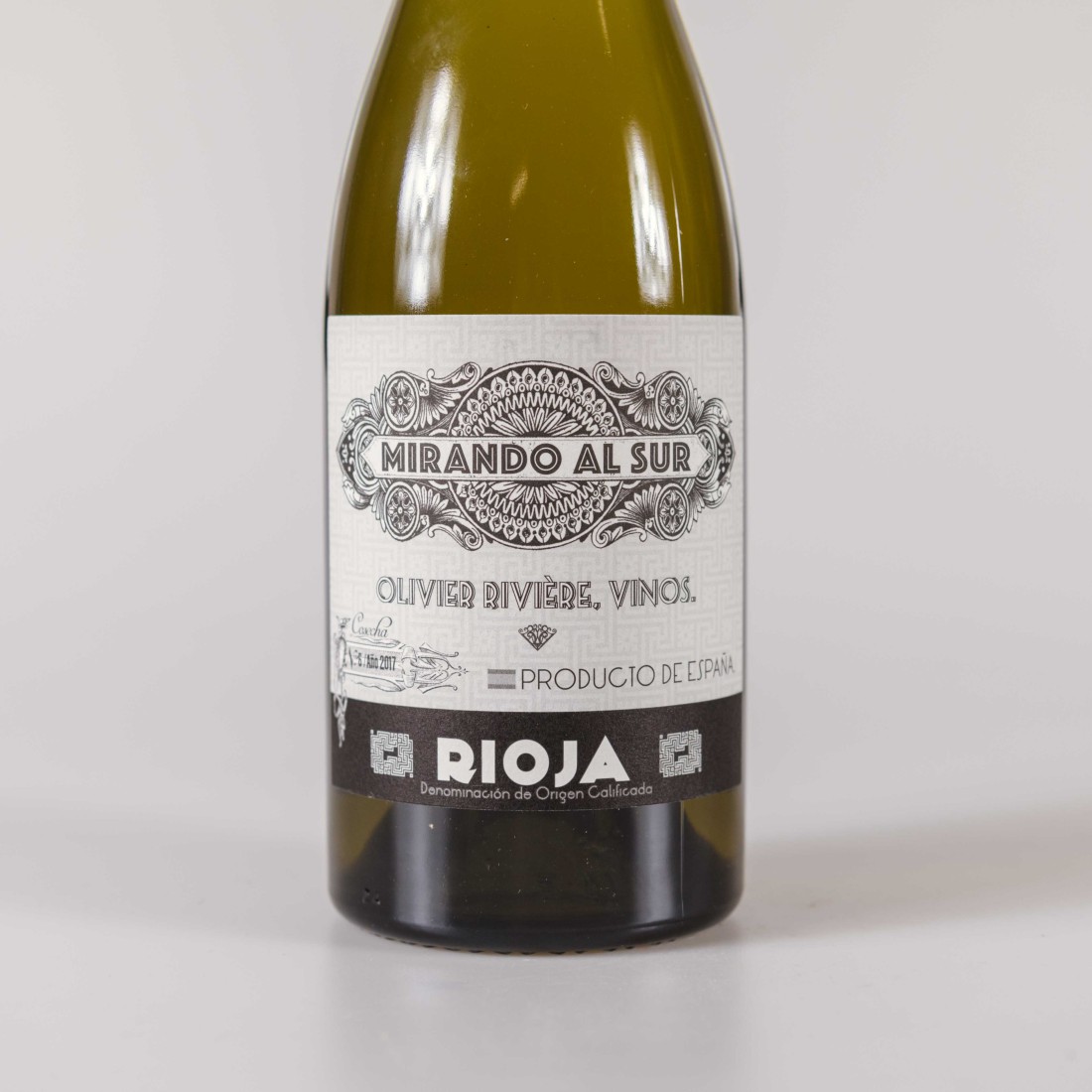| Vorig artikel | Toon lijst | Volgend artikel |
Rioja Blanco Mirando al Sur - Viura (20)
Viura + 10% Malvazia en Grenache Blanc | selectie uit Rioja Alavesa | zeer oude stokken van twee unieke percelen | kalk met rode gravel terroir | vergist en rijpt voor 6-7 maanden op foudre en dan voor 24 maanden op oude sherry buds (amontillado en fino) | serieus | diep | elegant | rokerig | geroosterde noten | meer klassiek wit rioja aan het worden | kan zeker rijpen | mooie kracht | verfijning | zilte toets | stenig onderlijnd
Olivier Rivière
Hoe komt een Fransman verzeild in Spanje? Vrij makkelijk eigenlijk! Als je stage kan lopen bij een van de beste wijnmakers uit het land, Telmo Rodriguez, sla je dat vanzelfsprekend niet af! Stap voor stap begint Olivier Rivière meer te leren en zorgvuldig te bouwen aan zijn eigen domein, wat nu 11 hectare beslaat. Na ook werkzaam te zijn geweest bij het beroemde Domaine Leroy vinifieert hij zijn wijnen naar de stijl van het perceel en/of dorp waar ze vandaan komen, zoals het ook werkt in de Bourgogne. De witte wijnen zijn lekker bourgondisch en rijp maar met finesse en de rode wijnen zijn eveneens karaktervol, hebben veel fruit maar zijn heel precies, met spanning en een grote complexiteit.
Review
I'd say that the white 2020 Mirando al Sur is more Rioja and less Sherry every vintage. It has a pale golden color; after all, it's older than the La Bastid that I tasted next to it, and there are some subtle notes of nuts and smoke, but overall, there are no aromas of flor or curry, and the profile is getting closer to some traditional oak-aged whites from Rioja. I guess the Sherry butts used for the wine are older, and their influence on the wine is softer. It fermented and matured in 600-liter barrels for six months, followed by another 22 months in Sherry barrels. It's ripe without excess at 14% alcohol, with a round palate and soft texture and with the characteristic chalky finish. 93/100 Luis Gutiérrez
Olivier Rivière produced 170,000 bottles, and in the 2022 harvest, he will pick a new plot of Garnacha in the village of Cárdenas for the first time since he planted in 2019. When I asked him about the latest vintages, he told me that he thought 2019 was an easy year in the vineyards with no diseases, uneventful weather, harvested à la carte when each plot was at its optimum moment. He likes the wines, which he finds balanced and with moderate alcohol that he compares with 2015 but with more complexity and with more acidity. 2020 was the most complicated year in the vegetative cycle with a very high pressure of mildew in spring; the summer was somewhat dry but the rains at the beginning of September helped to finish the maturation cycle. The reds are still completing the élevage, but it's a lighter vintage than 2019, very good also with lower yields. 2021 was a complicated year at first, with special care for powdery mildew, but then without problems in May, and there was a cold summer with little sun. There are two different harvests: the Rioja Baja harvest, where they had to harvest early due to rain, and the Rayos harvest, which was very easy, long and fruit driven. For the wines of Rioja Alta and Alavesa, he considers it a great vintage, from the people who waited for the perfect ripeness that took a long time to arrive. . . . He's reshaping the project in Rioja, refocusing to Cárdenas and selling the vineyards he had in Álava; 2020 will be the last vintages for Las Viñas de Eusebio, Losares and Pozo Alto. He is also starting a new winery in Bordeaux, in the Côtes de Bourg, an obscure zone with potential where he has purchased nine hectares of vineyards.



